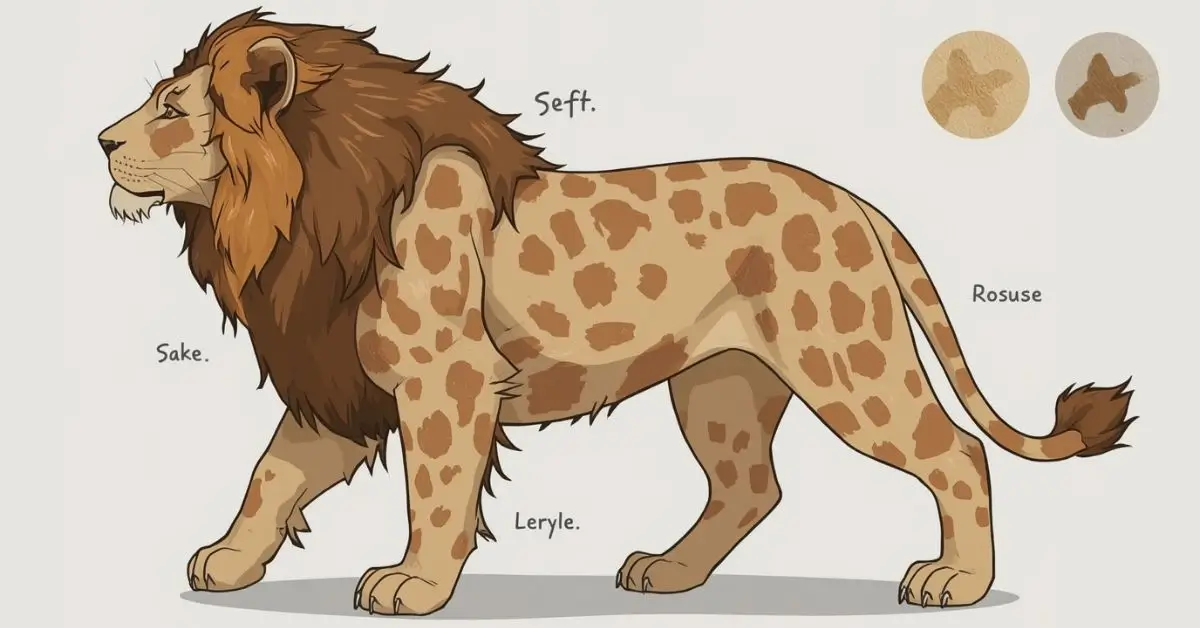ENTERTAINMENT
Squid Game Season 3: Release Date Teased for 2025 Premiere

Why “Squid Game” Became a Global Obsession
Squid Game Season 3 From its gritty portrayal of debt-ridden individuals battling for survival in twisted childhood games, Squid Game boldly captured global attention. Centered on characters like Seong Gi‑hun (Lee Jung‑jae), enigmatic Front Man (Lee Byung‑hun), and “Player 001” Oh Il-nam (O Yeong-su), the series delivers a potent mix of intense drama, social commentary, and nail-biting suspense.
The show’s commentary on wealth inequality, coded language, and underdog resilience resonated far beyond South Korea, thrusting names like Hwang Dong-hyuk (creator/director) and Park Hui-jung (producer) into the spotlight. The viral green tracksuits and distinctive pink-hooded guards became cultural symbols, spawning countless memes, merch, and fan theories. These elements cemented Squid Game’s place in streaming history—and set high expectations for its return.
What We Know So Far About Season 3
While Netflix hasn’t confirmed a precise release date, recent interviews and production tracking hint that Squid Game Season 3: Release Date will likely land in late 2025. Several industry sources report that the writers’ room reconvened in early 2024, finalizing scripts amid global tours and fan events. Principal photography reportedly wrapped in mid-2025, with post-production—complete with visual effects and score composition by Jung Jae-il—currently underway.

Key Development Updates
- Scriptwriting phase: Led by Hwang Dong-hyuk, with co-writers including Kim Jung-hyun.
- Casting: Core actors like HoYeon Jung (Kang Sae-byeok) are confirmed to return; newcomers rumored to include top Korean talent alongside international faces.
- Production design: Expect fresh locations, extravagant set pieces, and stylized callbacks to earlier games.
Industry analysts believe the goal is a Q4 2025 release, aligning with Netflix’s strategy of post-summer blockbusters. This window also provides a marketing runway after the flop of Six Christmases earlier in the year for the streamer.
Why Fans Should Care: Beyond the Release Window
While “when” is the burning question, why it matters offers deeper context:
- Character evolution: Will Gi‑hun face the Front Man in a rematch? Could Kang Sae‑byeok’s fate finally be revealed?
- Social allegory: The games have always served as a metaphor—what new inequalities or cultural commentary awaits in 2025?
- Production values: If the reported $30 million budget is true, that’s a sign Netflix is doubling down on cinematic quality—upgraded scoring, more elaborate set design (imagine an “Underwater Room” redux), and immersive cinematography.
- Cultural momentum: With Korean entertainment booming globally—thanks to BTS, Parasite, and Squid Game itself—this return is more than a sequel: it’s a reaffirmation of transnational storytelling.
Let’s dip into some intriguing fan theories gaining traction online (without confirming spoilers):
- Reverse games: Could the format flip—players hunting former organizers, instead of the other way around?
- Detention centers: Some speculate the games tie into a secret prison system featured in flashbacks—delving deeper into the Front Man’s backstory.
- Global expansion: Visual easter eggs hint at international participants—or maybe a copycat game in Europe or America? This aligns with Netflix’s strategy of global localization and transmedia storytelling.
Insider Rumors & Fan Theories
Industry gossip also hints at a potential cameo by a major Western star—matching the reported expansion of Netflix’s crossover formula seen in other mega-series.

Estimated Timeline for 2025
| Phase | Timeframe | Notes |
|---|---|---|
| Scriptwriting & Pre-production | Q1–Q3 2024 | Story narrative, character arcs refined |
| Principal Photography | Q4 2024–Q2 2025 | Filming at Seoul studios & new settings |
| Post-production & VFX | Q2–Q4 2025 | Soundtrack, editing, international dubbing, final scoring |
| Marketing & Release Campaign | Mid–late 2025 | Teaser trailers, press tours, K-con fan events |
| Series Premiere | Late 2025 | Global Netflix drop |
What to Do Before the 2025 Premiere
1. Rewatch Seasons 1 & 2
Refresh your memory on Seong Gi‑hun’s complex journey, the shadowy Worker Council, and the moral downfall of key contestants.
2. Read Creator Interviews
Hwang Dong‑hyuk has dropped subtle teases about allegory, generational trauma, and corporate exploitation—stay tuned by reading press updates.
3. Follow Behind-the-Scenes Content
Instagram reels and YouTube vlogs from cast members like HoYeon Jung and actors appearing at fan conventions offer early clues on character development.
4. Monitor Social Platforms
Subreddits like r/SquidGame and fan forums are hotbeds for decoding set photos, leaked scripts, or Thai plastic model sets spotted in crew zones.
Conclusion
Anticipation for Squid Game Season 3: Release Date Teased for 2025 Premiere is at fever-pitch. With elevated production budgets, expanded narratives, and lingering cliffhangers, the show promises to redefine global streaming again. Although Netflix hasn’t confirmed the exact drop date, an estimated late-2025 release seems increasingly likely.
While waiting, fans can revisit earlier seasons, engage with global discussions on societal pressures portrayed in the series, and follow official announcements that will seal the premiere date eventually. As the gaming marbles might say: it’s not just about watching—it’s about winning your cultural stakes.
Frequently Asked Questions (FAQs)
Q 1: Has Netflix officially confirmed Squid Game Season 3?
A: Yes. Although Netflix hasn’t revealed the exact release date, they’ve confirmed that Season 3 is in active development.
Q 2: Who is directing Season 3?
A: Hwang Dong‑hyuk is returning as showrunner and primary director, with Kim Jung‑hyun assisting as co-writer.
Q 3: Which cast members are returning?
A: Core cast—including Lee Jung‑jae (Gi‑hun) and HoYeon Jung (Sae‑byeok)—are expected back. More casting announcements will follow mid-2025.
Q 4: Will Season 3 drop in 2025?
A: Industry sources and Netflix production schedules suggest a late-2025 premiere, but stay tuned for official confirmation.
Q 5: What themes might Season 3 explore?
A: Anticipated focus areas include: expanded survival-game structures, richer character backstories (especially Front Man), and continuing social allegory around economic disparity and morality.
ENTERTAINMENT
Is OnionPlay Legal? Full Guide for 2025

Is OnionPlay legal ? With countless free movie streaming sites available, it’s easy to wonder whether using platforms like OnionPlay is safe, legal, or even wise. This guide dives into the legality, safety, and alternatives of OnionPlay, helping you make informed choices before you click “play.”
What Is OnionPlay?
OnionPlay is a popular platform for watching free movies online and TV shows. It claims to provide users with a wide variety of films without subscription fees. Its interface is straightforward, often categorized by genre, release year, or popularity, making it attractive for casual viewers and movie enthusiasts alike.
However, the very fact that it’s free raises a key question: Is OnionPlay safe to use?
One user tweeted: “I love OnionPlay for free movies, but I’ve been wondering if it’s actually legal. Does anyone know?”
This uncertainty drives many to research the platform’s legal status and safety.
OnionPlay Streaming Site: How It Works
The OnionPlay streaming site works by aggregating movie content from various sources online. Users can:
- Watch OnionPlay free movies online instantly
- Access OnionPlay online TV shows
- Browse films by category, popularity, or year
- Use the platform without a paid subscription
While convenient, the question remains: does OnionPlay violate copyright laws?
Is OnionPlay Legal Status: What You Need to Know
The OnionPlay legal status is complicated. Most of the content available on OnionPlay is not licensed officially. This means:
- Streaming copyrighted films or shows without permission can be considered illegal in many countries
- Using OnionPlay may expose users to copyright infringement risks
- While casual streaming is often low-risk, downloading or redistributing content increases legal exposure
In short, the platform exists in a legal gray area. Understanding your local laws is crucial before using it
Is OnionPlay legal and Safe to Use? Risks Explained
Many users ask: is OnionPlay safe to use? Safety concerns include:
- Malware or pop-ups: Some free streaming sites carry malicious ads
- Data privacy: Your browsing data may be tracked
- Legal risk: Watching copyrighted content may be illegal in your region
“I tried watching a movie on OnionPlay, and my browser was flooded with pop-ups. It made me reconsider using it,” shared one viewer.
To minimize risks, consider using ad blockers, VPNs, or legal alternatives.
OnionPlay Copyright Issues
OnionPlay copyright issues are the biggest concern for users. The platform streams films and shows without official licensing agreements. This raises questions such as:
- Does OnionPlay violate copyright laws?
- What are the consequences of using illegal streaming platforms?
- How do legal authorities view OnionPlay users?
In most countries, watching content online without permission may not lead to immediate fines, but distributing or downloading copyrighted material can have serious legal consequences.
Streaming Legality OnionPlay: Country Differences
The legality of OnionPlay streaming varies by country:
- United States & Canada: Streaming copyrighted content without a license may breach the Digital Millennium Copyright Act (DMCA)
- European Union: Many EU countries enforce strict copyright laws for online streaming
- Asia & South America: Enforcement varies; some regions have minimal legal repercussions
It’s important to check local regulations before using OnionPlay or similar free streaming platforms.
OnionPlay Alternatives: Safe and Legal Options
If you’re concerned about legality or safety, there are many OnionPlay alternatives:
- Netflix / Disney+ / Amazon Prime Video – Paid, legal streaming with high-quality content
- Crackle / Tubi / Pluto TV – Free, ad-supported platforms with licensed movies and shows
- Kanopy / Hoopla – Free streaming via libraries or universities
These platforms provide safe, legal, and high-quality content, eliminating the legal risks associated with OnionPlay.
OnionPlay Online TV Shows: What’s Available
Beyond movies, OnionPlay offers online TV shows. Users can:
- Stream recent series episodes
- Browse by genre or popularity
- Access free content without subscriptions
However, the same legal and safety concerns apply, making it important to consider legal alternatives for regular TV show streaming.
Free Movie Streaming Legality: Key Takeaways
Watching movies for free online is tempting, but free movie streaming legality depends on:
- Licensing agreements of the platform
- Whether the content is copyrighted
- Local laws governing online content
For most unlicensed platforms like OnionPlay, legality is questionable, and users assume risk when streaming or downloading content.
OnionPlay Site Review: Pros and Cons
A balanced OnionPlay site review highlights both advantages and risks:
Pros:
- Free access to movies and TV shows
- Simple, user-friendly interface
- No subscription required
Cons:
- Legal gray area; potential copyright infringement
- Pop-ups, ads, and malware risk
- No official customer support or guarantees
“I enjoy OnionPlay for free movies, but I stick to using a VPN and ad blocker,” says one user.
Tips for Safer Use of OnionPlay
If you decide to use OnionPlay despite the risks, consider these safety tips:
- Use a VPN to protect your identity and location
- Install ad blockers to minimize pop-ups and malware
- Avoid downloading content; stream only
- Regularly update your antivirus software
These precautions can reduce risks but do not make OnionPlay fully legal.
FAQ’s
Is OnionPlay legal streaming site?
No, OnionPlay streams content without official licensing, making it legally questionable in most countries.
Can I watch movies safely on OnionPlay?
Streaming is possible, but pop-ups, malware, and legal risks make it less safe than official platforms.
What are legal alternatives to OnionPlay?
Safe alternatives include Netflix, Disney+, Amazon Prime Video, Crackle, Tubi, and Pluto TV.
Does OnionPlay violate copyright laws?
Yes, using unlicensed content may breach copyright laws, especially if content is downloaded or redistributed.
Conclusion
The answer to is OnionPlay legal is mostly no. While the platform offers free movies and TV shows, it operates in a legal gray area and carries risks including copyright issues, malware, and privacy concerns. For safer and legal streaming, consider licensed platforms or free ad-supported alternatives.
ENTERTAINMENT
About Kira Bester: Early Life to Rising Success

If you’ve heard the name Kira Bester and wondered who she is, what she’s achieved, or what’s next for her—you’re in the right place. Whether you’re a fan, student, journalist, or someone interested in sports excellence, this guide dives into who Kira Bester’s is, what she has done, and why she matters in the world of ocean racing.
Who Is Kira Bester? Early Life & Background
- Kira Bester is a 23-year-old ocean racing surfski paddler from Cape Town, South Africa.
- She completed her studies at the University of Cape Town before focusing full-time on her athletic career.
- Kira Bester’s journey has been shaped by grit, determination, and a love for the ocean. She strives to push her limits and inspire others.
Kira Bester Career: Achievements & Highlights
Major Titles & Competitions
- In 2024, she won both the Open Ladies and Under-23 (U23) titles at the ICF Ocean Racing World Championships. These wins cemented her standing among the world’s top paddlers in her discipline. ( Kira Bester Paddling
- She represents PaddleSport South Africa in international competition. (ICF – Planet Canoe)
Performance & Style
- Ocean surfski racing demands not just strength but also endurance, technique, and mental resilience—qualities she consistently shows.
- She has participated in at least nine international events.
What Kira Bester Does Now & Vision Forward
- With studies completed, she is focused full-time on paddling and racing.
- She also seeks sponsorships and partnerships that align with her values of excellence, community, and environmental connection.
- Kira aims to inspire others—especially young women—in ocean sports while continuing to represent South Africa on the international stage.
Impact & Influence
- She has become a role model in the surfski and ocean racing community, showing that age, gender, and background aren’t limits.
- Her achievements help raise the profile of ocean sports in South Africa and globally.
Kira Bester’s: Personal Life & Public Profile
- She maintains a strong presence on social media, sharing not just her achievements, but her training, life on the water, and reflections on growth. (Instagram)
- She embodies values like persistence, passion for nature, and community engagement.
FAQ’s
Who is Kira Bester’s and what is she known for?
Kira Bester is a world-champion ocean racing surfski paddler from Cape Town, known for winning both the Open Ladies and U23 2024 ICF World Titles. (Kira Bester Paddling)
Kira Bester’s early life and education
She grew up in South Africa, developed her love for ocean sports, and studied at the University of Cape Town before turning fully to her paddling career. (Kira Bester Paddling)
Kira Bester’s professional achievements
Her top achievements include becoming the Open Ladies world champion and U23 world champion in ocean racing in 2024. (Kira Bester Paddling)
What does Kira Bester’s do now?
She currently focuses on competing in ocean racing, developing her craft, seeking meaningful partnerships, and inspiring upcoming athletes.
Latest updates on Kira Bester‘s
Her latest announcements include her wins at the 2024 ICF World Championships and her full commitment to a professional paddling career. (Kira Bester Paddling)
Kira Bester’s social media accounts
You can follow her on Instagram under @kira.besterpaddling for training, race updates, and personal insights. (Instagram)
Where is Kira Bester’s from?
She is from Cape Town, South Africa, representing South Africa in international ocean racing. (Kira Bester Paddling)
Conclusion
Kira Bester represents a powerful story of ambition, excellence, and inspiration. Her swift rise in ocean racing, recent championship wins, and commitment to her sport and values make her a name worth knowing. Whether you follow her for her athletic prowess, for her inspiring journey, or as a role model, Kira Bester is building a legacy on and off the water.
ENTERTAINMENT
Which Lioden Best Rossette Is Worth the Most?

If you play Lioden, you’ve probably heard other players talk about rosette markings—the rare, coveted spots that make lions stand out in both beauty and value. For new players, the challenge often lies in figuring out which rosettes are worth the effort and how to actually breed for them. For collectors and strategists, understanding the Lioden best rossette can make the difference between an average pride and one filled with top-tier, high-value lions.
This guide walks you through everything from breeding strategies to marking values, ensuring you know exactly which rosettes to chase and why they matter in the game’s economy.
What Is a Rosette in Lioden?
In Lioden, rosettes are special markings inspired by real-life leopard and jaguar patterns. They are rare to obtain and highly prized among collectors. Unlike common markings, rosettes carry both aesthetic appeal and trade value, making them a core goal for serious breeders.
- They often appear in rosette-specific slots in your lion’s marking set.
- Not every lion can inherit them easily—genetics and luck play a huge role.
- Some are multi-generational projects, requiring careful planning.
Why Players Want the Best Rossettes
- Aesthetic appeal – Lions with unique spotted designs stand out in prides and roleplay.
- Trade value – Rosette lions often sell for high GB or rare items.
- Breeding goals – Collectors enjoy stacking multiple rosettes in a single lion.
- Prestige – Owning rare rosettes signals expertise and dedication.
Lioden Rosette Markings Guide
Not all rosettes are equal. Some are easier to breed or trade for, while others sit at the very top of the Lioden rosette tier list. Below is a breakdown.
Common Rosettes
- Onyx Rosette
- Golden Rosette
- Feline Rosette
These are easier to find, making them entry-level for new breeders.
Rare Rosettes
- Quad Rosette (four stacked patterns)
- Clouded Rosette
- Vitiligo Rosette
These require special lineage planning and have significantly higher value.
Event-Exclusive or Ultra-Rare Rosettes
- Sunset Rosette
- Ebony Rosette
- Pulsar Rosette
Often tied to limited events, these are highly sought after by veteran players and collectors.
Best Rossettes in Lioden Breeding
When discussing lioden best rossette, most players look for:
- Stacking potential – Can you breed lions with multiple rosettes?
- Market demand – Are buyers currently seeking this marking?
- Uniqueness – Does it appear rarely across the player base?
Top Picks for Breeding:
- Quad Rosette Lions → High prestige, extremely valuable.
- Clouded Rosette → Rare and visually striking.
- Sunset/Ebony Rosette → Event exclusives that maintain long-term value.
Lioden Breeding Strategy for Rosettes
Breeding rosettes is not guaranteed—they follow genetic probability mechanics. To improve your chances:
- Pair lions that both carry a rosette marking.
- Use a marking applicator from events if available.
- Breed during special fertility events for better odds.
- Stack traits like mutations + rosettes to maximize resale potential.
Quick Breeding Tips Table
| Strategy | Effect on Rosette Odds | Notes |
|---|---|---|
| Breeding two rosette lions | High chance | Best long-term method |
| Using marking applicators | Direct guarantee | Expensive, event-limited |
| Mutations with rosettes | High trade value | Niche but very profitable |
| Common lion x rosette lion | Low chance | Good for beginners |
Rare Lioden Markings Explained
Rosettes aren’t the only rare markings, but they dominate the collector market. Players often compare them to:
- Mane mutations
- Special bases (like Raffle Lions)
- Event-only markings
Still, rosettes remain the most consistent value drivers in the long run.
Lioden Rosette Genetics Explained
Rosettes follow hidden genetic inheritance rules. In short:
- If one parent has a rosette, the cub has a chance to inherit it.
- If both parents have rosettes, chances increase.
- Some rosettes are slot-specific, making planning key.
This makes Lioden best rossette combinations essential knowledge for breeders.
Lioden Best Rossette Combinations
Some of the most popular combos include:
- Onyx + Clouded – Classic and valuable.
- Golden + Sunset – Vibrant, marketable.
- Quad Stack (multiple rosettes) – The holy grail of rosette breeding.
How to Get Rosettes in Lioden
- Buy from other players via the Trading Center.
- Breed strategically with rosette-carrying lions.
- Participate in events where rosettes or applicators drop.
- Invest GB in special marking items.
Lioden Rosette Marking Worth and Trading Tips
Market values fluctuate based on:
- Demand trends (what buyers currently want).
- Event cycles (when new markings release).
- Mutation + rosette combos (always high value).
Pro Tip: Always check current sales in the Trading Center before pricing.
Expert Sources & References
- Lioden Wiki – Markings & Genetics (Official Game Resource)
- Player Guides on Lioden Forums – Community-driven expertise on rosette breeding.
- Smogon/Reddit Lioden Communities – Trading trends and breeding projects shared by veteran players.
FAQ’s
What is the best rosette marking in Lioden?
Quad Rosette and Clouded Rosette are considered top-tier for both value and prestige.
How rare are rosettes in Lioden?
They are uncommon, with exact chances depending on parent genetics and slot placements.
How do you breed rosettes in Lioden?
Breed two rosette lions together, use marking applicators, or rely on event mechanics.
Which rosettes are most valuable in Lioden?
Quad Rosette, Sunset, and Ebony hold consistently high trade value.
How to increase chances of rosettes in Lioden?
Stack parents with multiple rosettes, breed during events, and use fertility boosters when possible.
Is it better to breed rosette lions or buy them?
For beginners, buying is faster. For long-term collectors, breeding projects are more rewarding.
Conclusion
Rosette markings remain some of the most coveted features in Lioden, combining rarity, beauty, and high trading value. Whether you’re breeding strategically, collecting prized lions, or trading in the market, knowing which rosettes hold the most value helps you maximize your pride’s potential. With the right approach, any player can work toward owning their dream lion with the best rosette.
-

 HEALTH5 months ago
HEALTH5 months agoGold Potato Calories: What’s Really on Your Plate?
-

 TECH4 months ago
TECH4 months agoSmart Tools for Special Education Success
-

 FASHION5 months ago
FASHION5 months agoShine On: Clean Silver Naturally
-

 ENTERTAINMENT5 months ago
ENTERTAINMENT5 months agoDancing Drops: A Fountain’s Charm
-

 ENTERTAINMENT5 months ago
ENTERTAINMENT5 months agoMatchday Spotlight: Today’s Must-Watch Football Showdowns
-

 BUSINESS5 months ago
BUSINESS5 months agoTower Loan Uncovered: What You Need to Know Before You Borrow
-

 BLOG5 months ago
BLOG5 months agoFlattering Cuts for Diamond-Shaped Faces
-

 BUSINESS4 months ago
BUSINESS4 months agoBeyond the Poké Ball: Inside Pokémon Center Japan
